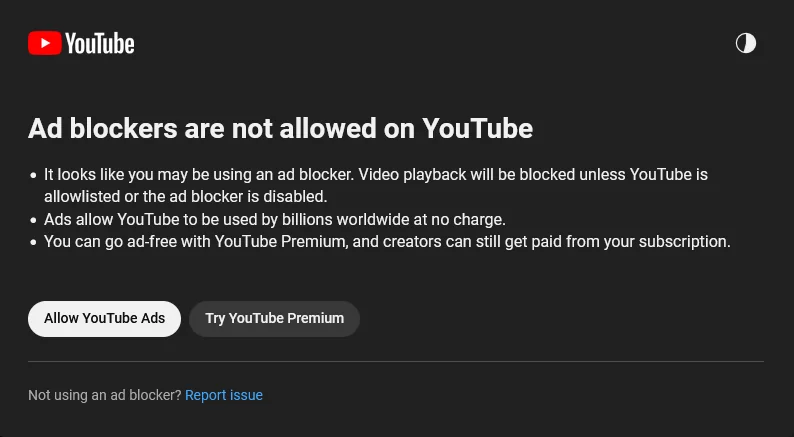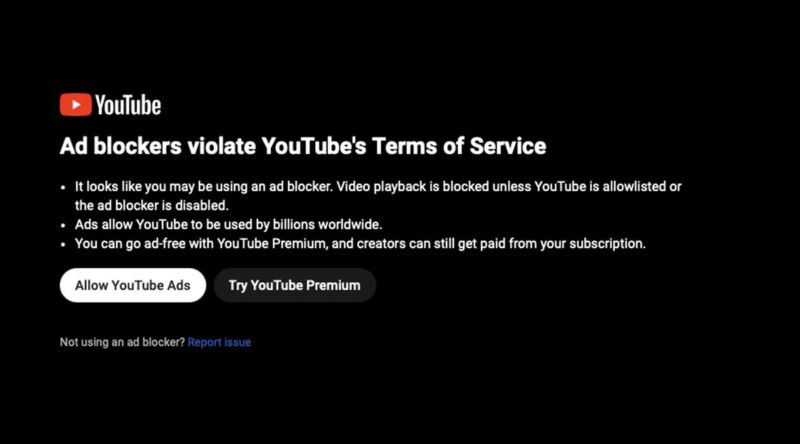YouTube viewers are once again caught in the crossfire of the continuing conflict between Google and ad blockers. According to recent reports, users of the video-sharing network who have engaged ad blockers are becoming frustrated by slow loading times and malfunctioning features.
Google’s Tightening Anti-Ad Blocking Policies
There is no denying that Google has been actively pursuing ad blockers, and things appear to be getting worse. YouTube slowdowns are now occurring for users using ad blockers, a development that has infuriated the community. What is the recommended remedy? For an ad-free experience, either turn off your ad blocker or choose to subscribe to YouTube Premium.

Google had previously experimented with on-screen pop-up notifications and a strict three-strikes policy that disabled the video player after three films were watched with an ad blocker installed in an effort to discourage the usage of ad blockers. This latest round of slowdowns is reminiscent of a similar strategy that was used in November and warned users that using an ad blocker would result in “suboptimal viewing.”
Reports on Reddit
Reddit users who use ad blockers on YouTube have been vocal about their problems. Many customers complained about slowdowns; some even thought these were network issues. For users using ad blockers, issues loading previews and accessing features like fullscreen or theatre mode became commonplace. Remarkably, load speeds were considerably faster after turning off the ad blocker, supporting the association.

Upon further investigation, 9to5Google found that there were problems with preview loading, lengthy video buffering, and the inability to access fullscreen and theatre modes without refreshing the website. The fact that the problem wasn’t reproduced elsewhere raises the possibility that these ad block limitations are regional in nature.
Artificial Timeout in the Code of YouTube
It appears that YouTube’s code has an artificial timeout, which is the source of the issue. This technique simulates a sluggish internet connection by purposefully slowing down the video player. Even though this is not a brand-new tactic, its use is growing as more people become aware of its effects.
Few User-Options
You have two options if you’re one of the people who are annoyed by these issues: buy a YouTube Premium membership or disable your ad blocker. These actions seem to be an attempt to deter consumers from using ad-blockers, which is in line with Google’s objective to protect its huge ad revenue—albeit anecdotal at this point.
Given that Google is expected to earn $224.47 billion in revenue from ads by 2022, it is clear that the tech giant is committed to safeguarding this valuable source of income and is using a variety of strategies to discourage consumers from using ad-blockers. Millions of YouTube fans’ online experiences are still being shaped by the constant struggle between user preferences and corporate interests.






